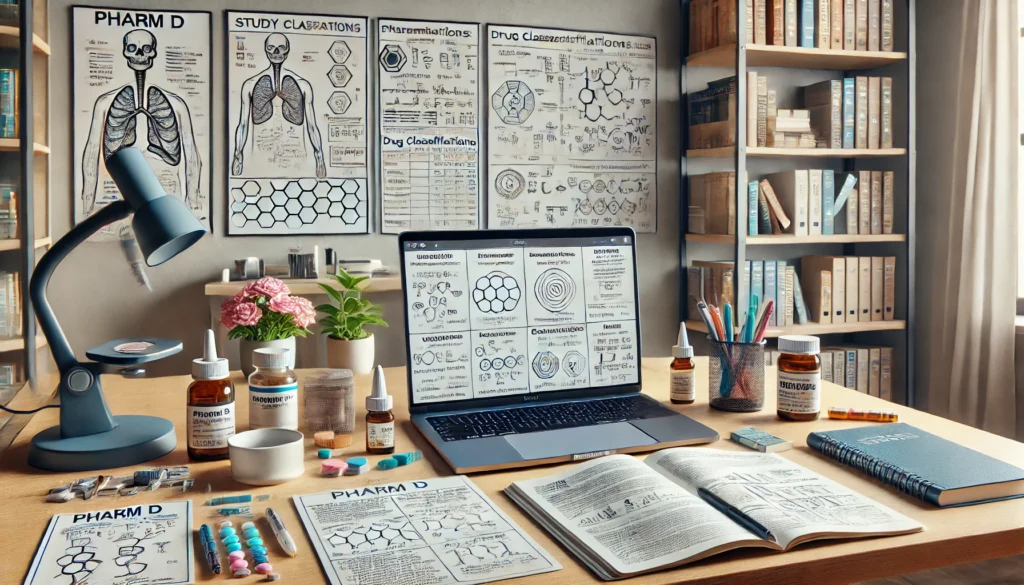Pharm D programs can be intense, with a lot of complex information to master. Having a well-organized set of notes can be a game-changer, making it easier to study and retain key concepts. Whether you’re just starting out or tackling advanced topics, a good notes collection can guide you through your studies and into your pharmacy career. Here’s a simple guide to creating effective Pharm D notes that cover everything from basics to advanced levels.
Why You Need Good Pharm D Notes
Pharm D is a challenging course, full of detailed concepts that can be tough to grasp. Good notes help break down these complex topics, making them easier to understand and remember. They’re not just useful for exams—they’ll also come in handy during clinical rotations and in real-world pharmacy practice.
Essential Basics to Include in Your Notes
- Drug Classifications
Start by categorizing drugs and noting their main uses. Keep your notes concise with bullet points on what each class of drugs treats and examples of common drugs in each class. - Pharmacokinetics and Pharmacodynamics
Pharmacokinetics covers how the body processes drugs, while pharmacodynamics focuses on how drugs affect the body. Simplify these with easy-to-understand diagrams or flowcharts. - Dosage Calculations
Include key formulas and some practice problems. Mastering these calculations is essential for accurate medication dosing in pharmacy practice. - Medical Terms and Abbreviations
Keep a section with common medical terms and abbreviations. A quick reference guide will help you speed up studying and improve your efficiency in clinical settings.
Intermediate Topics to Expand Your Knowledge

- Pathophysiology and Drug Therapy
Learn how diseases work and the drugs used to treat them. Summarize key points for each condition and include quick reference notes for common treatments. - Clinical Guidelines
Summarize the most important clinical guidelines for conditions like hypertension and diabetes. These summaries should be easy to scan and remember for exams or practical use. - Drug Interactions and Side Effects
Note common drug interactions and adverse effects. Organize them in charts or lists to make them easier to study and recall. - Patient Counseling Tips
Add practical tips for explaining medications, side effects, and the importance of adherence to patients. This will help you practice how to communicate effectively in clinical settings.
Advanced Topics for In-Depth Learning
- Clinical Pharmacokinetics
Explore how different factors like age or kidney function affect drug dosages. Use real-world examples and case studies to see how these adjustments are made. - Pharmacogenomics
Focus on how genetics can influence drug responses. Keep this section updated with key gene-drug interactions as this is a rapidly growing area in pharmacy. - Advanced Therapeutics
Include details on drug therapy for special populations, like children or the elderly. Highlight the unique considerations needed for these groups. - Research and Evidence-Based Practice
Learn how to evaluate clinical studies and apply evidence-based practices. Include notes on study designs and tips on how to interpret results for clinical decision-making.
Tips for Organizing Your Pharm D Notes
- Consistency is Key: Use a consistent format for all your notes, like bullet points, tables, or mind maps, to make studying easier.
- Use Digital Tools: Apps like OneNote, Notion, or Evernote can help keep your notes organized, searchable, and accessible anywhere.
- Keep Notes Updated: Regularly review and update your notes with the latest guidelines, research, and information to ensure they stay relevant.
- Personalize Your Learning: Add colors, mnemonics, or any other personal touches that help you learn and remember information more effectively.
Conclusion
Having a well-structured set of Pharm D notes is crucial for success in your studies and future career as a pharmacist. Start with the basics, build up to more complex topics, and keep your notes detailed and up-to-date. By doing so, you’ll have a reliable study tool that helps you tackle the challenges of the Pharm D program with confidence.
FAQs
Q: How can I improve the effectiveness of my Pharm D notes?
A: Keep them organized, use visual aids like charts and diagrams, and regularly update them to reflect the latest information and guidelines.
Q: What tools are best for taking Pharm D notes?
A: Digital tools like OneNote, Notion, or Evernote are excellent for organizing your notes, but choose what works best for you, whether that’s digital apps or traditional handwritten notes!














